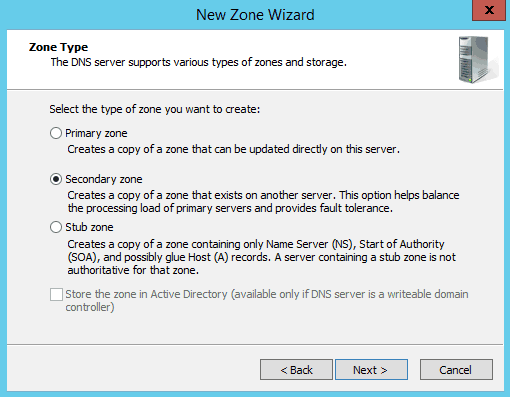Definition of Secondary Name Server in Network Encyclopedia.
What is Secondary Name Server?
Secondary Name Server is a name server that downloads its Domain Name System (DNS) database of resource records from a master name server. The master name server can be either a primary name server or another secondary name server.

Primary name servers get their resource records from local files called zone files. Secondary name servers do not maintain local zone files – they obtain their resource files over the network from master name servers via a zone transfer, which occurs when a secondary name server polls a master name server and determines that there are updates to the DNS database that need to be downloaded. This means that the DNS administrator has to maintain only a single set of DNS resource records (on the primary name server), which simplifies DNS administration.
Secondary name servers are used in the DNS to provide redundancy and load balancing for name resolution. On BIND implementations of DNS, secondary name servers are often referred to as slave name servers.
Name Server type per-zone basis
A name server can be a primary name server for one zone and a secondary name server for a different zone. In other words, name servers are defined as primary or secondary on a per-zone basis.
Secondary Name Server for Backup
On a corporate TCP/IP internetwork that uses DNS as its name resolution method, it is a good idea to have at least two name servers – a primary master name server, and a secondary name server for backup. Otherwise, if the primary goes down, users won’t be able to resolve server names on the network and therefore won’t be able to find and access any network resources.
BIND makes it possible for slave name servers to keep backup copies of zone files in case the master name server goes down. It is generally a good practice to keep such backup copies. You can also implement a list of up to 10 master name servers that can be tried successively by each slave name server in a very large DNS implementation. BIND v8 includes a feature whereby the primary notifies the slave when changes have been made to the primary’s DNS database. This notification process causes BIND v8 name servers to be more up to date with each other than with the polling procedure of earlier BIND implementations.